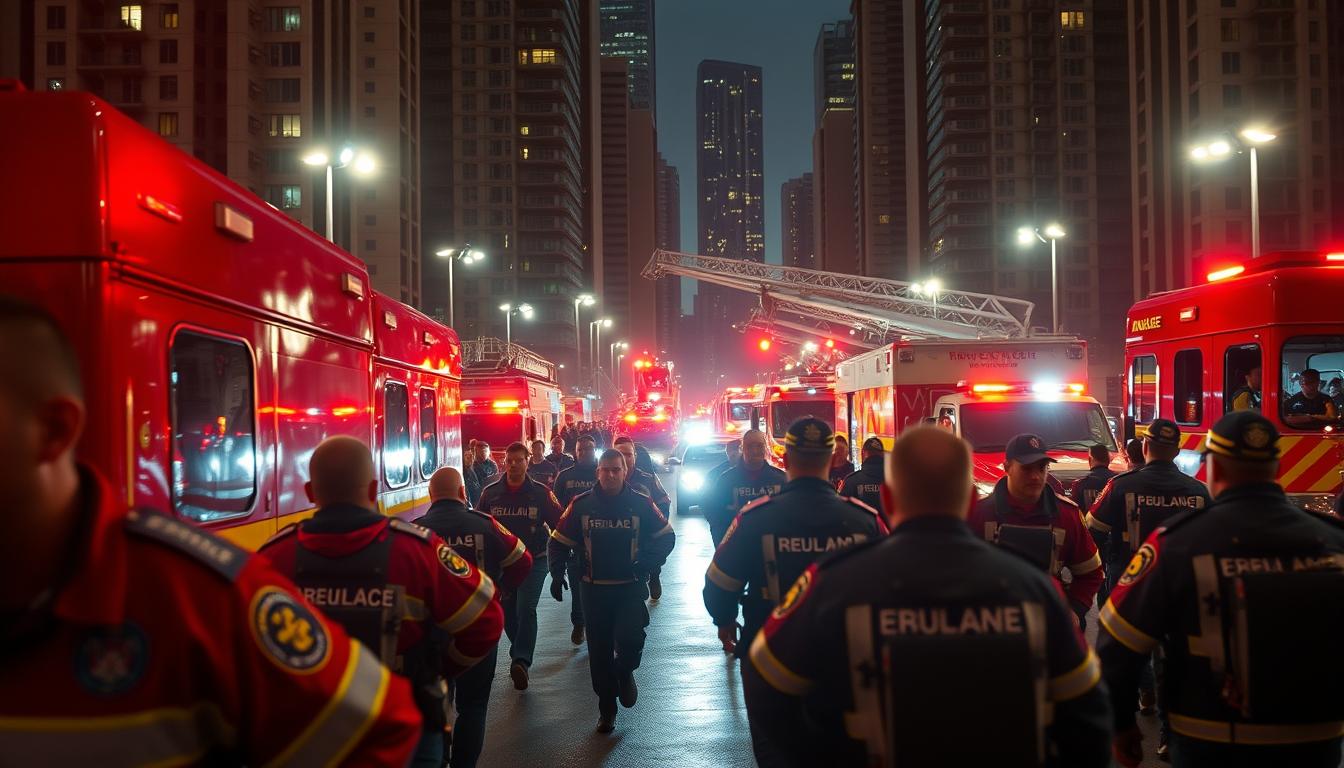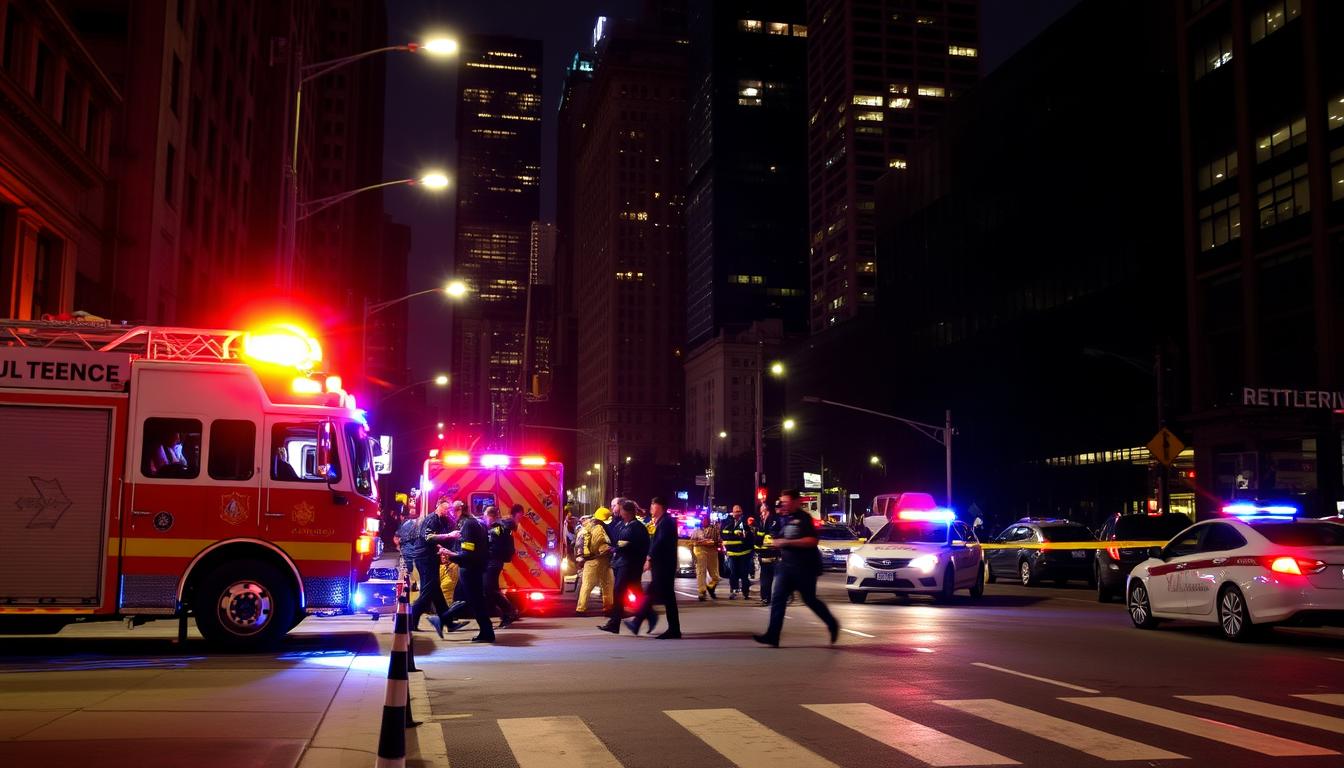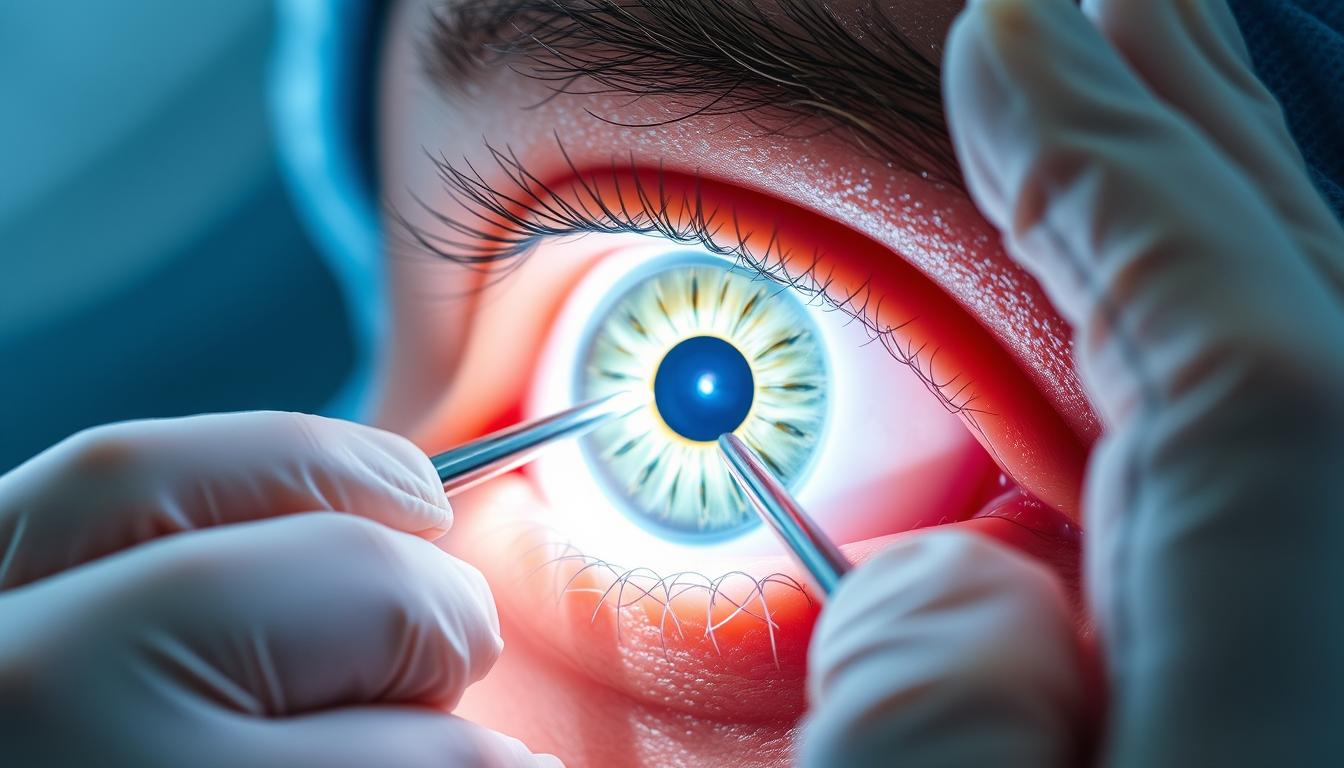
In the United States, over 240 million calls are made to emergency services each year, highlighting the critical role these services play in public safety.
Emergency response teams are the first line of defense in crisis situations, providing immediate assistance and care. These teams are comprised of highly trained professionals, including firefighters, paramedics, and police officers.
The importance of emergency assistance cannot be overstated, as it provides the necessary support during life-threatening situations, natural disasters, and other emergencies, ensuring the public receives timely and effective help.
What Are Emergency Services
When emergencies arise, it’s the emergency services that step in to save lives and protect communities. Emergency services are a critical part of maintaining public safety and providing immediate assistance during emergencies.
Core Functions of Emergency Services
Emergency services perform a variety of core functions that are essential to community well-being. These functions can be broadly categorized into two main areas:
Life-Saving and Protection Services
Emergency services provide immediate medical care, rescue operations, and firefighting services. These life-saving and protection services are crucial in preventing loss of life and property damage during emergencies.
Disaster Response and Recovery
In addition to immediate response, emergency services also play a key role in disaster recovery efforts. They help communities recover from disasters by providing support and resources needed to rebuild and restore normalcy.
The Critical Role of Emergency Services in Communities
Emergency services are vital to the safety and well-being of communities. They provide 24/7 emergency help and urgent care services, ensuring that communities are protected and supported during times of need.
The presence of robust emergency services can significantly reduce the impact of emergencies and disasters, saving lives and minimizing damage. By understanding the role and importance of emergency services, communities can better appreciate the value of these critical services.

Types of Emergency Services in the United States
In the United States, various types of emergency services work together to provide immediate assistance during emergencies. These services are critical in saving lives and reducing the impact of emergencies on communities.
Medical Emergency Services
Medical emergency services are a crucial component of the emergency response system. They include Emergency Medical Technicians (EMTs) and paramedics who provide pre-hospital care.
Emergency Medical Technicians (EMTs) and Paramedics
EMTs and paramedics are first responders trained to deliver medical care outside the hospital. They assess patients’ conditions, provide treatment, and transport them to medical facilities when necessary.
- EMTs are trained to provide basic life support, such as CPR and wound care.
- Paramedics have advanced training, enabling them to administer medications and perform complex medical procedures.
Emergency Departments and Trauma Centers
Upon arrival at a hospital, patients are treated in emergency departments or trauma centers. These facilities are equipped to handle a range of medical emergencies, from minor injuries to life-threatening conditions.
- Emergency departments provide immediate care for acute illnesses and injuries.
- Trauma centers are specialized facilities equipped to handle severe injuries, such as those sustained in car accidents or violent assaults.
Fire and Rescue Services
Fire and rescue services are another vital component of emergency services. They respond to fires, rescues, and other emergencies, providing critical assistance and saving lives.
- Firefighters are trained to extinguish fires, rescue people from burning buildings, and provide emergency medical care.
- Rescue services involve specialized teams that can extract people from dangerous situations, such as collapsed buildings or natural disasters.
Law Enforcement Emergency Response
Law enforcement agencies play a key role in emergency response, particularly in situations involving criminal activity or public safety threats.
- Police officers are often the first to respond to emergency calls, providing initial response and securing the scene.
- Specialized units, such as SWAT teams, are deployed in high-risk situations.
Disaster Management and Relief Organizations
Disaster management and relief organizations are essential in responding to large-scale emergencies, such as natural disasters.
- These organizations coordinate relief efforts, providing food, shelter, and medical care to affected communities.
- They also work to mitigate the impact of future disasters through planning and preparedness measures.
When to Call Emergency Services
Understanding when to call emergency services is crucial for ensuring timely assistance in life-threatening situations. Emergency services, including medical, fire, and law enforcement, are designed to respond to emergencies that pose an immediate threat to life or property.
Recognizing Life-Threatening Emergencies
It’s essential to recognize situations that require immediate emergency response. These include severe injuries, chest pain, difficulty breathing, severe allergic reactions, and situations where there’s a risk of harm to oneself or others. If you’re unsure whether a situation is life-threatening, it’s always best to err on the side of caution and call for emergency assistance.
Examples of life-threatening emergencies:
- Severe car accidents with injuries
- Heart attack or stroke symptoms
- Severe burns or injuries from accidents
- Violent crimes in progress
Non-Emergency Situations: Where to Turn Instead
Not all situations require an emergency response. For non-emergency situations, there are alternative contacts to consider. For instance, if you need to report a minor crime or a noise disturbance, you should contact your local non-emergency police number. Similarly, for non-life-threatening medical issues, visiting an urgent care center or scheduling an appointment with your primary care physician is more appropriate.
| Situation | Recommended Action |
|---|---|
| Minor medical issues | Visit an urgent care center or primary care physician |
| Noise disturbance | Contact local non-emergency police number |
| Information or assistance | Contact relevant local or national helplines |
The Impact of Unnecessary Emergency Calls
Making unnecessary emergency calls can have significant consequences, including diverting emergency response teams away from real emergencies. This can delay response times and potentially put lives at risk. It’s crucial to use emergency services responsibly and only call when there’s a genuine emergency.
By understanding when to call emergency services and using these services judiciously, we can help ensure that emergency responders are available to assist those in genuine need. This not only enhances community safety but also supports the well-being of emergency response teams.
How Emergency Response Systems Work
Emergency response systems are the backbone of public safety, providing 24/7 emergency help in critical situations. These systems are designed to respond to a wide range of emergencies, including medical emergencies, fires, and law enforcement situations.
The 911 Dispatch Process
When an emergency occurs, calling 911 is the first step in getting help. The 911 dispatch process is a critical component of emergency response systems.
What Happens When You Call 911
When you call 911, your call is answered by a trained dispatcher who will ask you for information about the emergency. This information is used to determine the type of response needed and to dispatch the appropriate emergency services.
- The dispatcher will ask for your location and the nature of the emergency.
- They will also ask for additional information, such as the number of people involved and any other relevant details.
- Based on this information, the dispatcher will dispatch the appropriate emergency responders.
Information You Should Provide
When calling 911, it’s essential to provide clear and accurate information to ensure an effective response.
- Stay calm and speak clearly.
- Provide your location or the location of the emergency.
- Describe the nature of the emergency.
Emergency Response Protocols and Coordination
Emergency response protocols are in place to ensure a coordinated response to emergencies. These protocols involve multiple agencies and emergency responders working together to respond to emergencies effectively.
Coordination is key to a successful emergency response. This involves communication between different agencies, such as law enforcement, fire departments, and emergency medical services (EMS).
Response Times and Priority Determination
Response times are critical in emergency situations. The priority of the response is determined based on the severity of the emergency and the information provided when calling 911.
- Life-threatening emergencies are given the highest priority.
- Response times are influenced by factors such as location, traffic, and the availability of emergency responders.
First Responders: The Frontline of Emergency Services
In the face of emergencies, first responders stand as the initial line of defense, providing critical care services and ensuring public safety.
First responders, including firefighters, paramedics, and police officers, undergo rigorous training to prepare them for the challenges they may face during emergencies. Their ability to respond effectively is crucial in saving lives and mitigating the impact of emergencies.
Training and Certification Requirements
To become a first responder, one must undergo comprehensive training that includes both theoretical knowledge and practical skills. For instance, paramedics are required to complete a certification program in emergency medical services (EMS), which covers a wide range of topics from basic life support to advanced cardiac life support.
The training is designed to equip first responders with the skills necessary to handle emergencies, including life-threatening situations such as cardiac arrests and severe injuries.
Roles and Responsibilities During Emergencies
First responders are tasked with a variety of roles during emergencies, including providing medical care, extinguishing fires, and maintaining order. Their responsibilities often require them to make quick decisions in high-pressure situations, which can be mentally and physically demanding.
For example, during a natural disaster, first responders may be responsible for evacuating people from dangerous areas, providing medical aid to those injured, and securing the affected area to prevent further harm.
Mental and Physical Challenges Faced by Emergency Personnel
The work of first responders is not only physically demanding but also mentally challenging. They often witness traumatic events and are exposed to high levels of stress, which can lead to mental health issues such as post-traumatic stress disorder (PTSD).
To mitigate these challenges, many emergency services provide their personnel with access to mental health support and resources, as well as training on how to manage stress and maintain their physical health.
In conclusion, first responders play a vital role in emergency services, and their work is crucial to public safety and well-being. Their dedication and bravery in the face of adversity are truly commendable.
Emergency Services Access: Urban vs. Rural Areas
The disparity in emergency services access between urban and rural areas is a pressing concern that affects communities nationwide. While urban areas typically have well-developed emergency response systems, rural areas often face significant challenges in accessing timely emergency assistance.
Geographical Challenges in Service Delivery
Rural areas are characterized by vast distances, sparse populations, and limited infrastructure, making it difficult to deliver urgent care services efficiently. The geographical challenges include:
- Longer response times due to greater distances
- Limited availability of emergency services personnel
- Inadequate road infrastructure
In contrast, urban areas have more concentrated populations and better infrastructure, facilitating quicker response times and more accessible emergency services.
Resource Allocation and Response Time Differences
The allocation of resources and response times varies significantly between urban and rural areas. Urban areas typically have more resources at their disposal, including:
| Resource | Urban Areas | Rural Areas |
|---|---|---|
| Emergency Personnel | Higher density of trained personnel | Limited personnel, often requiring longer travel times |
| Equipment and Vehicles | Well-maintained and modern equipment | Older equipment, sometimes inadequate for emergencies |
| Response Times | Generally quicker, often under 10 minutes | Longer, sometimes exceeding 30 minutes |
Community-Based Solutions for Underserved Areas
To address the disparities in emergency services access, community-based solutions are being implemented in underserved areas. These include:
- Training community members in basic life support and first aid
- Establishing community emergency response teams (CERTs)
- Improving communication networks for emergency response coordination
By adopting these community-based solutions, rural areas can enhance their capacity to provide emergency assistance and urgent care services, bridging the gap with urban areas.
Preparing Your Personal Emergency Plan
Emergency preparedness starts at home, and having a personal emergency plan is the first step towards being ready for any situation. A well-crafted plan can help minimize risks and ensure that you and your family know how to respond during emergencies.
Creating a List of Essential Emergency Contacts
One of the critical components of a personal emergency plan is having a list of essential emergency contacts. This list should include phone numbers for local emergency services, your emergency services provider, and important family contacts. Make sure to save these numbers in your phone and keep a physical copy in a safe, easily accessible place.
Home Emergency Preparedness Essentials
Being prepared at home involves having the right supplies and a clear plan. This includes creating emergency supply kits and establishing family communication plans.
Emergency Supply Kits
An emergency supply kit should contain essential items such as non-perishable food, bottled water, first aid supplies, and a battery-powered radio. It’s crucial to check and update your kit regularly to ensure that all items are still usable and not expired.
Family Communication Plans
A family communication plan outlines how family members will contact each other if you are separated during an emergency. Choose a meeting spot outside your home and a contact person outside your immediate area that family members can call to check in.
Special Considerations for Children, Elderly, and Disabled Individuals
When creating a personal emergency plan, it’s essential to consider the special needs of children, elderly, and disabled individuals. This may involve having additional supplies, such as diapers or necessary medications, and ensuring that your emergency plan accounts for any specific needs or equipment required.
By taking these steps, you can ensure that you and your family are better prepared to face emergencies, knowing that you have a plan in place to respond effectively.
Conclusion: The Evolving Landscape of Emergency Services
The landscape of emergency services is continuously evolving to meet the changing needs of communities across the United States. An effective emergency response team is crucial in providing 24/7 emergency help to those in need.
As discussed, understanding the different types of emergency services and when to access them is vital for public safety. From medical emergencies to law enforcement and fire services, each plays a critical role in responding to various situations.
The challenges faced by first responders, including mental and physical strain, highlight the importance of community support and resources. By being prepared and knowing how to access emergency services, individuals can contribute to a safer and more resilient community.
As emergency services continue to adapt to new challenges and technologies, their core mission remains the same: to provide timely and effective assistance in times of need. Ensuring that everyone has access to 24/7 emergency help is a collective responsibility that requires ongoing effort and commitment.
FAQ
What are emergency services, and why are they important?
Emergency services are critical care services that provide immediate assistance during life-threatening emergencies, disasters, or other critical situations. They are essential for saving lives, preventing injuries, and maintaining community safety and well-being.
What types of emergency services are available in the United States?
The United States has various emergency services, including medical emergency services, fire and rescue services, law enforcement emergency response, and disaster management and relief organizations. These services work together to provide comprehensive emergency assistance.
When should I call emergency services, and what information should I provide?
You should call emergency services during life-threatening emergencies, such as severe injuries, fires, or crimes in progress. When calling, provide your location, a clear description of the emergency, and any other relevant information to help responders.
What is the role of first responders in emergency services?
First responders, including EMTs, paramedics, firefighters, and law enforcement officers, are the frontline personnel who provide immediate emergency assistance. They are trained to respond to various emergencies, provide critical care, and maintain public safety.
How do emergency response systems work, and what happens when I call 911?
Emergency response systems involve a coordinated effort between dispatchers, first responders, and other emergency personnel. When you call 911, your call is routed to a dispatcher who assesses the situation, gathers information, and sends the appropriate responders to your location.
What are some common challenges faced by emergency services in rural areas?
Rural areas often face geographical challenges, limited resources, and longer response times, making it harder for emergency services to deliver timely assistance. Community-based solutions and innovative approaches are being explored to address these challenges.
How can I prepare a personal emergency plan, and what are the essential elements?
To prepare a personal emergency plan, create a list of essential emergency contacts, prepare a home emergency supply kit, and develop a family communication plan. Consider special needs for children, elderly, and disabled individuals, and stay informed about potential hazards and emergency procedures.
What is the impact of making unnecessary emergency calls, and how can I avoid it?
Making unnecessary emergency calls can divert resources away from actual emergencies, delaying response times and putting lives at risk. To avoid this, only call emergency services during genuine emergencies, and use alternative resources, such as non-emergency numbers or online reporting tools, for non-urgent situations.



![Maternity Ward at [Hospital Name] – Exceptional Care](https://zyplin.com/wp-content/uploads/2025/06/fe0f7353-210f-4c41-be1a-1f81eae63528.jpg)

